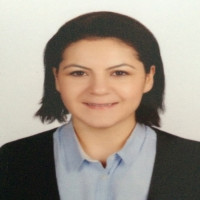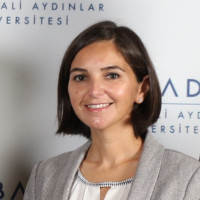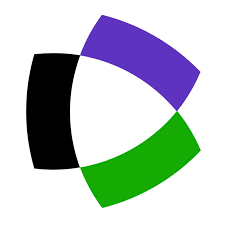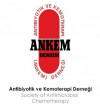Research Article
Issue Editorial Board

Prof. Dr. Dolunay Gülmez graduated from Hacettepe University Faculty of Medicine in 1998 and completed her specialization training in the Department of Medical Microbiology at the same university. She received the title of Associate Professor in 2014 and Professor in 2021. She currently serves as a Professor in the Department of Medical Microbiology at Hacettepe University Faculty of Medicine. Her scientific studies began with bacteriology and focused on mycology after 2012.
Aim & Scope
Journal of ANKEM, the publication organ of the Turkish Society of Antimicrobial Chemotherapy is a peer-reviewed journal aiming to publish qualified scientific articles that will contribute to the world of science.
Authors who will send articles to our journal should carefully examine the Publication Policies and Authoring Rules sections.
Journal of ANKEM adopts an open access policy, you can access published articles in PDF format.
The studies, reviews, case reports, publications and news in the fields of microbiology and infectious diseases, especially resistance to antimicrobials are within the scope of Journal of ANKEM.
Author Guidelines
REVIEWER AND EVALUATION PROCESS
The decision about the publication of all articles to be published in the journal belongs to the editors. However, the editors shape their decisions in line with the recommendations of the reviewers.
All studies submitted to Journal of ANKEM are subject to double-blind peer-review. The only person who knows every step in this evaluation is the editor and/or the responsible assistant editor. Authors cannot know who is the reviewer who will evaluate their work, and the reviewers cannot know the authors whose work they evaluate.
Each work to be sent is evaluated by at least two reviewers, preferably three, who are experts in their fields. Every effort is made by the editors so that the articles can be evaluated quickly. In case the opinions of the reviewers differ, the final decision authority in the evaluation processes of the articles rests with the editor.
Preliminary Evaluation Process
The relevant editor examines the incoming work according to the purpose and scope of the journal, whether it is in accordance with the spelling rules, scientific, English and Turkish language proficiency. At this stage, the editor can send questions to the author and request corrections.
The articles that are found suitable as a result of the examination are taken into the reviewer evaluation process, the articles that do not comply with the publication rules and publication policy of the journal or that are not scientifically sufficient are returned to the corresponding author.
Writing rules
Compliance with research and publication ethics is the most sought-after features for articles to be sent to Journal of ANKEM. Journal of ANKEM is published three times a year (April, August, December) starting from the 29th volume, research articles are mainly included in each issue, and only a few reviews and case reports are included.
Authors are required to state their ORCID numbers, which they will obtain from www.orcid.org.
ARTICLE PREPARATION
Scientific studies requested to be evaluated for publication in Journal of ANKEM will be accepted through DergiPark as of January 1, 2024, and the process will proceed from there. Since Journal of ANKEM carries out the evaluation process in a double-blind manner, the uploaded article as a Word file should not contain information about the authors' identity information and the institution where the study is conducted.
In addition to article files; "Journal of ANKEM Author Approval-Transfer of Publication Rights and Declaration of Conflicts of Interest Form , which states that the article has not been published in another journal, that the authors approve the publication of the article in Journal of ANKEM and all its content, and that includes academic titles such as Bio, Dr, Specialist Dr., Prof Dr...., signed by all authors. When necessary, the approval of the Ethics Committee should be sent to the same address by e-mail, and originals with wet signatures should be kept by the authors so that they can be sent to the journal if desired. For case reports, a signed informed consent form obtained from the patient or the legal guardian, stating that the information can be published is mandatory. In cases where this is not possible, approval of the ethics committee is required. It is the authors' responsibility to provide the originals of the informed consent documents and ethics committee permission documents, when necessary. The mailing address of the correspondent author, tel, GSM, fax numbers, e-mail address and e-mail addresses and ORCID numbers of all other authors should be specified. Approvals from authors other than the relevant author are also received via e-mail.
If the article is about a presentation that has been made before, the meeting where the presentation was made should be reported with the name-date-place and presentation number. If any support is received, the institution from which the support is received and the relevant project number, if any, should be specified.
Research articles to be published in Journal of ANKEM should be deemed appropriate by the editorial board in terms of both scope and layout. After such articles are arranged according to the ANKEM format, the authors and addresses are hidden and sent to scientific reviewers. The reviewers who helped Journal of ANKEM for the articles in one volume are listed in the 3rd issue of the volume and they are acknowledged. The editorial board decides whether the articles are published, whether they are published after correction, and the priority of publication, taking into account the reviewer reports. The editorial board has the authority to make corrections and abbreviations that do not change the message of the article. Scientific and legal responsibility for the article belongs to the authors.
Spelling and language layout:
Articles are published in Turkish or English.
For texts in Turkish language, see the details given in the Turkish version of this page. For texts in English, proper grammar, spelling, and proper punctuations should be used.
Latin microorganism names used in the text (except in tables and references) should be written in italics. The microorganism name, which is written in full when first used, should be abbreviated by using the first letter of the genus name in later use. For example, write as “Escherichia coli” first in the text and as “E. coli” in the following. Latin-derived terms such as in vitro, in vivo, sensu stricto, sensu lato should be written in italics. All numbers at the beginning of a sentence and numbers smaller than 10 spelled out. If possible, avoid starting a sentence with a number. “Gram”, which is the staining method, and when used to identify bacteria, should be written in capital letters such as “Gram negative/positive” instead of “gram (-/+)”.
Manuscripts:
Original articles should include TURKISH TITLE, ENGLISH TITLE, TURKISH ABSTRACT, ENGLISH ABSTRACT, INTRODUCTION, MATERIALS AND METHODS, FINDINGS, DISCUSSION, REFERENCES. If you want to write ACKNOWLEDGEMENTS, it should be placed before the REFERENCES. Review articles should include TURKISH TITLE, ENGLISH TITLE, TURKISH ABSTRACT, and ENGLSIH ABSTRACT sections and should be divided into sections as the author deems appropriate. Case reports should have TITLE, ENGLISH TITLE, TURKISH ABSTRACT, ENGLISH ABSTRACT, INTRODUCTION, CASE and DISCUSSION sections. Opinions about the studies published in the journal and the answers of the authors of the related study are included in the "Letter to the Editor" section. Opinions sent as letters to the editor should be kept short, should not be used more than 500 words and 5 references unless necessary, and should not include an “ABSTRACT”.
Author names should be written in full with surnames capitalized. The affiliations of the authours should be shown under the names of the authors in the shortest form. If the authors work in different organizations, the names and organizations should be indicated with numbers. In addition to the institution where the authors work at the date of application, if different, the institutions at the date of the study should also be specified. In order to give this information correctly, more than one institution information can be entered for an author.
The abstract should contain the content of the article, important points about the findings, should be long enough to give the reader sufficient information about the whole article and should not exceed 250 words. Four to six “Keywords” should be placed after the abstract. Since these words will be used in subject indexes, they should be chosen carefully (please use Medical Subject Headings (MESH) at https://www.nlm.nih.gov/mesh/MBrowser.html ) and sorted by letter index.
Turkish and English abstracts and keywords should be identical.
INTRODUCTION should give information that will facilitate understanding of the subject and the aim of the study in a short and concise manner.
The MATERIALS AND METHODS section should not re-tell what is known by the people who are related to the subject, and a narrative showing easily accessible references should be preferred.
FINDINGS should present the results of the study with the help of tables and figures, if necessary. Figures, graphics and photographs should not be used unless absolutely necessary. The information given in the tables should not be repeated in the text, important parts should be emphasized if necessary.
The DISCUSSION section should not repeat the findings and tables, should highlight important aspects of the findings and compare them with the findings of other researchers. Articles should not exceed 10 pages, excluding tables and figures, and the number of references (excluding reviews) should not exceed 25. Longer articles are accepted by the editorial board if deemed necessary, they can be shortened by the board or shortened by the author.
Table and figure layout: Tables should contain upper and lower lines and intermediate lines as necessary (unnecessary horizontal and vertical lines should be avoided), they should be listed with Arabic numerals, the table legend should be written above the table top line. The table legend should be as short as possible. Efforts should be made to present the findings in tables for easy understanding, but a separate table should not be prepared for the issues mentioned in a few sentences in the text. The information in the table in the text should not be repeated unnecessarily, it should be contented with stating the important issues. If means and percentages in tables (and text) are not significant, they should not be run after the whole number (or should be run as significant), and should be rounded to the nearest number. For example: specifying 13 of 34 strains as 38% may facilitate understanding, but this ratio should not be extended to 38.2%. It should be considered that the first digit in the extension indicates a probability of one in a thousand, but in large numbers it is right to indicate this probability. Averages should be given in a way that is meaningful and easy to understand. For example, the average of the erythrocyte counts should be given as 4,365,000 and not 4,365,248. Figures, graphics, chemical formulas, photographs, and microphotographs to be added to the article only if necessary should be named and listed as "Figure".
REFERENCES should be listed in alphabetical order and the spelling should be in accordance with the "Vancouver" citation style. Examples can be taken from the following examples and the spelling rules on the web page of our journal (http://www.nlm.nih.gov/bsd/uniform_requirements.html). All the works used should be given as a reference, but the reference should not be used to increase the number. Turkish references that will be useful should not be ignored. All of the references must be used in the text and all those used in the text must be included in the list of references.
When citing references, the number of parentheses to be placed at the end of the sentence in the text should be written: “...shown (1,5,6)”. If the name of the author is used when citing the reference in the text, the reference number should be written next to the author's name. According to Smith and Jones(4)........., if there are more than two authors, according to Smith et al.(4).........
When preparing the reference list, the names of all six or fewer authors should be used, and in the references with seven or more authors, "et al." or “et al.” abbreviation should be used.
The list of references should be sorted in alphabetical order. For references with the same author names, the year should be taken into consideration, and if they are in the same year and in the journal, the volume and page numbers should be taken into account.
While citing the reference, the following examples should be taken as a basis, punctuation, word and letter spacing, capital letters, journal, volume, issue, page numbers should be written accordingly.
Journal names: International journals should be abbreviated as "PubMed Journals Database", Turkish journals should be abbreviated as "http://www.atifdizini.com/Journals/ tr-index.html".
Hindler JF, Stelling J. Analysis and presentation of cumulative antibiograms: a new consensus guideline from the clinical and laboratory standards institute. Clin Infect Dis. 2007;44(6):867-73. https://doi.org/10.1086/511864
References from the internet websites:
If author/s available: In accordance with the spelling rules of Journal of ANKEM, the author's name, subject title, institution to which the page belongs, access address and access date should be given: Töreci K. Young authors of Journal of ANKEM, ANKEM Association, http://www.ankemdernegi.org.tr/?sp =guest0606 (accessed 1.1.2015)
If the author is not available: The subject title, the institution to which the page belongs, the access address and the date of access should be given. Inappropriate antibiotic use for pneumonia common. Medscape Infectious Diseases, http://www.medscape.com/ viewarticle/876918, (accessed 03.03.2017)
When books and book chapters are used as a reference, the following examples should be taken as basis in terms of spelling and punctuation:
Book: 4th Baron EJ, Peterson LR, Fingeold SM. Bailey and Scott's Diagnostic Microbiology, 9th ed., pp.168-204, Mosby Co., London (1994).
Book chapter: 4. Swenson JM, Hindler JA, Peterson LR. Special tests for detecting antibacterial resistance, in the book “Murray PR, Baron EJ, Pfaller MA, Tenover FC, Yolken RH (eds): Manual of Clinical Microbiology, 6th edition”, pp. 1356-72, ASM Press, Washington (1995).
In books in Turkish, the name of the publishing institution and the publication number, if any, should be used, not the publisher. Like “Istanbul Medical Faculty Publication No.20, Istanbul (2001)”.
Congress proceedings: Abstracts and presentations in congresses if published in a journal, are cited as other articles in the journal. Those published in a special congress book can be cited according to the following example:
Akyüz Z, Dinç U, Güler NC et al. Determination of the distribution of Candida species isolated from blood samples in our hospital between 2005-2008, XXXIII. Turkish Microbiology Congress Book, pp.846-7, Bodrum (2008) (may be in Poster no. instead of page).
SUBMIT AND WITHDRAW ARTICLES
Article Submission: Articles must be uploaded to the DergiPark system as of January 1, 2024. A plagiarism report is created during upload.
Article Withdrawal: Due to our publication policies, the journal editor and the author have to cooperate in the withdrawal process.
The author who wishes to withdraw his/her work in the evaluation phase should submit the request containing the justification to the editorial board in electronic or printed form, with a wet signature stating that all authors have approved.
The Editorial Board examines the request and returns to the author within ten days at the latest. Unless the withdrawal request is approved by the editorial board, the work whose publishing right has been transferred to Journal of ANKEM at the time of article submission cannot be sent to another journal for evaluation.
CONTACT US:
The Turkish Society of Antimicrobial Chemotherapy
Address: Topkapı Mahallesi Turgut Özal Millet Cad. No: 176 Floor:5 D:16 Fatih, İSTANBUL
Tel: 0212 219 9339-40
Fax: 0212 219 9341
E-mail: ankem@ankemdernegi.org.tr
Web: http://www.ankemdernegi.org.tr
E-mail: ankem@ankemdernegi.org.tr
Publisher: DergiPark
Ethical Principles and Publication Policy
This guide should be carefully reviewed by all researchers who will submit a study to the Journal.
The sources used while preparing these policies are indicated at the end of the guide.
OPEN ACCESS POLICY
Being aware of the need for easy access to information in order to advance scientific studies, Journal of ANKEM supports the open access initiative of the peer-reviewed journal literature included in the Budapest Open Access Declaration and presents all published articles free of charge in an environment where everyone can read and download it. In this declaration, open access is used as “the ability to access, read, save, copy, print, scan, link to the full text, index, transfer to software and use for any legal purpose the scientific literature without financial, legal and technical barriers through the Internet”. Considering the role of knowledge sharing in the advancement of science, open access is of great importance for researchers and readers. For this reason, the articles in this journal can be used as long as the author and the original source are cited. No permissions are required from authors or publishers. The articles in this journal can be accessed among search engines, websites, blogs and other digital platforms. translation can be accessed from the address. No subscription fee, publication fee or similar payment is requested for accessing the articles published in Journal of ANKEM. Authors can store submitted, accepted and/or published versions of their articles in their preferred archives.
These open access policies, which were accepted on 12 September 2012 and adopted by our editorial board, can be accessed at http://www.budapestopenaccessinitiative.org/boai-10-translations/turkish-translation.
No subscription fee, publication fee or similar payment is requested for accessing the articles published in Journal of ANKEM.
Authors can store submitted, accepted and/or published versions of their articles in their preferred archives.
Creative Commons
A Creative Commons license is a type of public copyright license that allows free distribution of a copyrighted work or work. When an author wants to give the right to share or make changes to the work he has created, he uses the CC license.
Journal of ANKEM approves the "Creative Commons Attribution License (Attribution-NonCommercial-NoDerivatives 4.0 International CC BY-NC-ND)" license for all published articles.
This license allows other authors to use your work in their own work for non-commercial purposes and attribution to your work.
Open access is an approach that reinforces interdisciplinary development and encourages collaboration between different disciplines. Therefore, the JOURNAL contributes to its field by offering more access to its articles and a more transparent review process.
ETHICS POLICY
It is aimed that all stakeholders (author, editor, reviewer, publisher and reader) who present a scientific study contribute to the correct progress of science. Compliance with scientific ethical principles is important in scientific studies prepared in accordance with this goal.
These ethical principles have been accepted by us on the basis of the directive prepared by COPE (Committee on Publication Ethics), and some of them are presented below, with suggestions for adoption by stakeholders.
Ethical Responsibilities of Authors:
To ensure the accuracy of the data related to the study, to keep the records of the research in order and to be able to access this data upon possible request.
Making sure that the article submitted is not published or accepted elsewhere.
If the presented content matches a previously published or submitted content, this conflict should be accepted and cited, if necessary, the editor should beprovided with a copy of any work that may have similar content related to the submitted work, permission should be obtained to reproduce or use any content from other sources, and the source should be cited.
Ensuring compliance with national and international laws and guidelines for all studies involving human or animal subjects (for example, WMA Declaration of Helsinki, NIH Policy on the Use of Laboratory Animals, EU Directive on the Use of Animals), confirming that necessary approvals have been obtained, and respecting subject privacy. To indicate the relevant ethics committee approvals and research details of the study in the "Materials and Methods" section of the study.
In case of any conflict of interest, when he/she detects an ethical violation regarding his/her article, to share it with the editor and publisher, to issue an error statement, addendum, compensation notice or to withdraw the work when deemed necessary.
Ethical Duties and Responsibilities of Editors
To act in a balanced, objective and fair manner in the performance of their duties without discrimination on the basis of gender, religious or political beliefs, ethnic or geographical origin of the authors.
Evaluating the works submitted to the journal according to their content, not giving any privilege to any author.
To take necessary measures to prevent possible conflicts of interest and to evaluate existing statements, if any.
Treating sponsored works or studies on special subjects in the same way as other studies,
In case of an ethical violation complaint, to follow the necessary procedures by adhering to the journal's policies and procedures. To give the authors an opportunity to respond to the complaint, not to avoid the necessary sanctions, regardless of who the work belongs to.
To reject the incoming study if it is not suitable for the purpose and scope of the journal.
Ethical Responsibilities of Reviewers
To review the article in a timely manner objectively and to agree to consider only studies related to the area of expertise, in order to contribute to the editor's decision-making process.
To make the evaluation objectively only in relation to the content of the study. To evaluate the work without considering religious, political and economic interests.
To provide directions that will help improve the quality of the article to be published and to examine the study meticulously. To convey his comments to the author in a constructive and kind language.
To protect the confidentiality of the information provided by the editor and the author, to destroy the study after the evaluation process in accordance with the confidentiality principle, to notify the editor if there is a situation contrary to blind reviewering and not to evaluate the study.
Be aware of potential conflicts of interest (financial, corporate, collaborative, or other relationships between author and author) and alert the editor to withdraw their assistance for this article if necessary.
Publisher's Ethical Responsibilities
The publisher, one of the stakeholders involved in a scientific study, should also act within the scope of all these ethical principles.
The publisher is obliged to use its communication power without any personal interest and to direct its target audience correctly.
It undertakes the task of archiving every published product.
People should not hesitate to contact the publisher when they encounter an unethical situation.
Some of the actions considered to be against scientific research and publication ethics:
Plagiarism: To present the original ideas, methods, data or works of others as one's own work, in whole or in part, without attribution in accordance with scientific rules,
Fraud: Using non-existent or falsified data in scientific research,
Distortion: To falsify research records or obtained data, to present devices or materials that are not used in the research as if they were used, to falsify or shape the research results in line with the interests of the people and organizations that receive support,
Republishing: Presenting duplicate publications as separate publications for academic appointments and promotions,
Slicing: To present the results of a research as separate publications in academic appointments and promotions by disaggregating the results of a research in a way that violates the integrity of the research and publishing it in more than one issue,
Unfair authorship: Including people who do not have active contributions among the authors or not including those who do, changing the order of authors in an unjustified and inappropriate way, removing the names of those who contributed actively from the work in subsequent editions, using his influence to include his name among the authors,
Not specifying the people, institutions or organizations that support them and their contributions in the publications made as a result of the research carried out with support,
Using the thesis or studies that have not yet been presented or defended and accepted as a source without the permission of the owner,
Failure to comply with ethical rules in research on humans and animals, not respecting patient rights in their publications, harming animal health and ecological balance, not obtaining necessary permissions,
To misuse the resources, places, facilities and devices provided or allocated for scientific research,
Making false or misleading statements regarding scientific research and publications in academic appointments and promotions,
Plagiarism Policy
Plagiarism, whether intentional or not, is an ethical violation. Similarity of studies with other sources without reference and publishing them in this form is not only unethical, but also a crime and unacceptable.
The Editorial Board can act in accordance with the COPE rules in the face of allegations and suspicions of plagiarism, citation manipulation and data fraud regarding the studies submitted to the journal.
CONFLICT OF INTEREST
Situations that provide economic or personal benefits create a conflict of interest. The reliability of the scientific process and published articles; It is directly related to the objective handling of conflicts of interest during the planning, implementation, writing, evaluation, editing and publication of scientific work.
Financial relationships are the most easily identifiable conflicts of interest and it is inevitable that they damage the credibility of the journal, the authors, and the science. These conflicts can be caused by personal relationships, academic competition, or intellectual approaches. Authors are not responsible for any activities that restrict access to all data of the study or analyze the data, interpret it, prepare the articles, publish it, etc. avoid entering into agreements with both for-profit and non-profit sponsors that interfere with their capabilities.
In order to avoid conflicts of interest, editors should also avoid bringing together people who may have a relationship during the evaluation of studies. Editors who make the final decision on articles should not have any personal, professional or financial ties to any of the issues they will decide on. Individuals should inform the editorial board about possible conflicts of interest so that the articles can be evaluated within the framework of ethical principles and an independent process can be carried out.
Our editorial board works devotedly to carry out the evaluation process in an impartial manner, taking all these situations into account.
Resources used in the preparation and adoption of policies:
Budapest Open Access Declaration
ICMJE (International Committee of Medical Journal Editors)
Creative Commons
COPE (Committee on Publication Ethics)
Journal of Education and Science Editorial Policies
DOAJ Principles Of Transparency And Best Practice In Scholarly Publishing, Version 3
YÖK Scientific Research and Publication Ethics Directive
Price Policy
Journal of ANKEM does not charge any fee to the authors, and presents all articles free of charge in an environment that anyone can read and download.
Indexes
Journal Boards
Journal of ANKEM Editorial Board

Prof. Dr. Dolunay Gülmez graduated from Hacettepe University Faculty of Medicine in 1998 and completed her specialization training in the Department of Medical Microbiology at the same university. She received the title of Associate Professor in 2014 and Professor in 2021. She currently serves as a Professor in the Department of Medical Microbiology at Hacettepe University Faculty of Medicine. Her scientific studies began with bacteriology and focused on mycology after 2012.
Prof. Dr. Tutku Soyer, Hacettepe Üniversitesi Tıp Fakültesinden 1998 yılında mezun olup tıp doktoru ünvanı almış, aynı üniversitenin Çocuk Cerrahisi Anabilim Dalında uzmanlık eğitmeni tamamlamıştır. 2011 yılında Doçent, 2018 yılında Profesör ünvanı alan Soyer, halen Hacettepe Üniversitesi Tıp Fakültesi Çocuk Cerrahisi Anabilim Dalında Profesör olarak görev yapmaktadır. 2023 yılında Klinik beslenme yüksek lisansını tamamlamıştır. Türkiye Çocuk Cerrahisi Derneği yönetim kurulu üyesidir.
I graduated from Hacettepe English Faculty of Medicine in 1998. After completing my specialization training at Uludağ University Faculty of Medicine, Department of Infectious Diseases and Clinical Microbiology between 2001-2006, I worked as a specialist at Bursa Çekirge State Hospital between 2006-2010, at Uludağ University Faculty of Medicine, Department of Infectious Diseases and Clinical Microbiology between 2010-2014, and as an assistant professor at the same university in 2014. I received the title of Associate Professor in 2016. I am currently continuing my education at Bursa Uludağ University Faculty of Medicine, Department of Infectious Diseases and Clinical Microbiology.

Prof. Dr. Sebahat Aksaray graduated from Ankara University Faculty of Medicine in 1985 and received her medical doctorate. She completed her Microbiology and Clinical Microbiology specialist training at Ankara Numune EAH in 1990. Receiving the title of Associate Professor in 2002 and Professor in 2018, Aksaray currently serves as Professor in the Department of Medical Microbiology at Hamidiye Faculty of Medicine, University of Health Sciences, and as the Administrative and Education Manager of Medical Microbiology at SBU Haydarpaşa Numune Training and Research Hospital.
She was born in Lüleburgaz in 1978. She completed her middle and high school education at Lüleburgaz Anatolian High School. After graduating from Istanbul Faculty of Medicine in 1996, she started her specialist training in Child Health and Diseases at Istanbul Faculty of Medicine in 2002. She completed her specialist training in 2008 and completed her subspecialty training in Child Infectious Diseases at Istanbul Faculty of Medicine in 2013. She became an associate professor of Child Infectious Diseases in 2017 and a professor in 2022. She currently works as a faculty member at Istanbul Faculty of Medicine, Department of Child Infectious Diseases. She has 85 articles published in peer-reviewed journals scanned in national and international indexes and has authored 26 book chapters. She is married and has two children.
Journal of ANKEMAdvisory Board 2024



Dr. Ceylan Polat holds bachelor's degree in Biology from Celal Bayar University and master's and doctorate degrees in Medical Microbiology from Dokuz Eylul University. She served as a lecturer at Izmir University of Economics, Faculty of Health Sciences between 2018 and 2020. She has been a faculty member at Hacettepe University, Faculty of Medicine, Department of Medical Microbiology, since 2020.
Dr. Ceylan Polat's research focuses on zoonotic and vector-borne (tick, mosquito and sandfly) viral infections. Dr. Polat adopts the “One Health” approach in her research. She has been interested in molecular epidemiology and the evolution of emerging and re-emerging arboviruses and roboviruses, as well as virus discoveries to aid in preparedness for future outbreaks. She received international scholarships and conducted research in reference laboratories in Finland and France.
1981 yılında İzmir, Karaburun'da doğmuş olan Suat Sarı, lisans eğitimini 2004 yılında İstanbul Üniversitesi Eczacılık Fakültesinde tamamlayarak eczacı olarak mezun oldu. İnönü Üniversitesi Sağlık Bilimleri Enstitüsünde Farmasötik Kimya alanında yüksek lisans yaparak 2012 yılında Hacettepe Üniversitesi Sağlık Bilimleri Enstitüsünde doktora eğitimine başladı. Bu esnada Hacettepe Üniversitesi Eczacılık Fakültesi Farmasötik Kimya Anabilim Dalında araştırma görevlisi olarak görev yapmaya başladı. Doktora çalışmalarını 2018 yılında tamamlayan Suat Sarı, 2020 yılında aynı anabilim dalına doktor öğretim üyesi olarak atandı ve 2023 yılında doçentlik ünvanı aldı. Çalışmalarını antifungal etkili azol türevi bileşiklerin tasarımı, bilgisayar destekli ilaç tasarımı ve organik sentetik medisinal kimya alanlarında yoğunlaştıran Suat Sarı evli ve bir çocuk babasıdır.

Prof. Dr. Oğuz Karabay üniversite öğrenimini Trakya Üniversitesi Tıp Fakültesinde 1992 yılında tamamladı. Aynı fakültenin Enfeksiyon Hastalıkları ve Klinik Mikrobiyoloji Anabilim Dalında 1997 yılında uzmanlığını aldı. Uzmanlık sonrasında Beykoz Devlet hastanesi ve Düzce SSK Hastanesinde çalıştı. 2003 yılında Abant İzzet Baysal Üniversitesinde yardımcı doçent ve 2006 yılında Doçent ünvanı aldı. 2008 yılında Sakarya Eğitim ve Araştırma hastanesinde klinik şefi ve kurucu Başhekim olarak atandı. 2011 yılında Sakarya Üniversitesi Tıp Fakültesi Enfeksiyon Hastalıkları Anabilim Dalı Profesör kadrosuna atandı. 2014-2016 yılları arasında Tıpta Uzmanlık Kurulu üyeliği ve Hastane Enfeksiyonları Danışma Kurulu üyeliği yaptı. 2012-2020 yılları arasında Sakarya üniversitesi Sağlık Bilimleri Enstitüsü müdürlüğü yaptı. 2020-24 yıllarında Sakarya Üniversitesi Tıp Fakültesi Dekanlığı görevini yaptı.
İlgi alanları, kronik hepatitler, Antibiyotik yönetimi ve HIV/AIDS oluşturmaktadır. Türkiye Enfeksiyon Hastalıkları Derneği (EKMUD) ve Viral hepatitle savaşım derneği olmak üzere birçok ulusal ve uluslararası derneğe üyedir. Uluslararası indekslerde taranan 310 yayını, 13 kitap ve kitap bölümü, 4 adet patenti bulunmaktadır.
Oğuz Karabay evli ve üç çocuk babasıdır.
Doç. Dr. Güle ÇINAR, Hacettepe Üniversitesi Tıp Fakültesi’nde lisans eğitimini tamamladı. Önce Ankara Üniversitesi Tıp Fakültesi Genel Cerrahi Anabilim Dalında genel cerrahi ihtisasına başladı. Daha sonra Ankara Üniversitesi Tıp Fakültesi Enfeksiyon hastalıkları ve Klinik Mikrobiyoloji Anabilim Dalında enfeksiyon hastalıkları ihtisasına başlayarak 2012 yılında Enfeksiyon Hastalıkları ve Klinik Mikrobiyoloji uzmanı oldu. Kahramanmaraş ve Afyonkarahisar illerindeki zorunlu hizmet görevinden sonra 2017 yılında Ankara Üniversitesi Tıp Fakültesi Enfeksiyon Hastalıkları ve Klinik Mikrobiyoloji Anabilim Dalında Öğretim Görevlisi olarak akademik yaşantısına başladı. 2021 yılında doktor öğretim üyesi kadrosuna atandı. 2023 yılı ocak ayında doçent ünvanı aldı. 70 makalesi, 128 yurt içi ve yurt dışı bildirisi ,12 kitap bölümü, 745 atıfı bulunmaktadır.
İLGİ ALANLARI:
Bağışıklığı baskılanmış hastalarda görülen enfeksiyonlar
Hematolojik maligniteli hastalarda görülen enfeksiyonlar
Kök hücre nakli yapılan hastalarda görülen enfeksiyonlar
Organ nakli yapılan hastalarda görülen enfeksiyonlar
Biyolojik ajan kullanan hastalarda görülen enfeksiyonlar
HIV
Hepatit B virüsü
Hepatit C virüsü
Antibiyotik dirençli bakteri enfeksiyonları
Sistemik mantar enfeksiyonları
Bruselloz
İdrar yolu enfeksiyonları
Üst solunum yolu enfeksiyonları
Pnömoni (Zatürre)
Tüberküloz
Ortopedik enfeksiyonlar (osteomiyelit / protez enfeksiyonları)
Covid 19


Unvanı, Adı Soyadı: Uzm. Dr. Nida Akar
Doğum Tarihi/Doğum Yeri: 28.12.1988/Kozan
e-posta: nidakilic87@gmail.com
Yabancı Dil: İngilizce
Eğitimi:
İstanbul Üniversitesi İstanbul Tıp Fakültesi, İstanbul 2005-2011
Uzmanlık Eğitimi:
Düzce Üniversitesi Tıp Fakültesi, Tıbbi Mikrobiyoloji ABD 2013-2017
Yan Dal Uzmanlık Eğitimi:
Hacettepe Üniversitesi Tıp Fakültesi, Tıbbi Mikrobiyoloji ABD, Tıbbi Mikoloji Bilim Dalı 2018-2022
Çalıştığı Kurumlar:
Sağlık Bakanlığı Kozan 5 No'lu Sağlık Ocağı, Adana, Pratisyen Hekim 2011
Düzce Üniversitesi Tıp Fakültesi, Tıbbi Mikrobiyoloji ABD, Düzce, Uzmanlık Öğrencisi 2013-2017
Sağlık Bakanlığı Atatürk Sanatoryum Eğitim ve Araştırma Hastanesi, Ankara, Uzman Doktor
Hacettepe Üniversitesi Tıp Fakültesi, Tıbbi Mikrobiyoloji ABD, Tıbbi Mikoloji Bilim Dalı, Ankara, Yan Dal Uzmanlık Öğrencisi 2018-2022
Adana Şehir Eğitim ve Araştırma Hastanesi, Adana, Uzman Doktor, 2022-Halen
Tıbbi İlgi ve Uzmanlık Alanları:
Tez Çalışması:
"DÜZCE İLİ ORMAN KÖYLERİNDE HANTAVİRUS VE BORRELİA BURGDORFERİ SEROPREVALANSININ VE BÖLGE HALKININ FARKINDALIĞININ ARAŞTIRILMASI" (Tez Danışmanı: Doç. Dr. Emel Çalışkan). Düzce Üniversitesi Tıp Fakültesi, 2017
Araştırmalar ve Yayınlar:
Akar N, Çalışkan E, Öztürk CE, Ankaralı H, Kılınçel Ö, Öksüz Ş, Şahin İ. Seroprevalence of hantavirus and Borrelia burgdorferi in Düzce (Turkey) forest villages and the relationship with sociodemographic features. Turk J Med Sci. 2019 Apr 18;49(2):483-489. doi: 10.3906/sag-1807-160. PMID: 30862151; PMCID: PMC7018355.
Akar N, Arbak PM, Öztürk CE, Kılınçel Ö, Çalışkan E, Şahin İ, Öksüz Ş. Bir Üniversite Hastanesindeki Oksijen Tedavisi Nemlendiricilerinin Mikrobiyolojik Açıdan İncelenmesi. Anadolu Klin. 2019;24(2):115-21.
Gülmez D, Sığ AK, Akar N, Duyan S, Arıkan Akdağlı S. Enfeksiyon Etkeni Mantarların Zamana Göre Sıklık ve Tür Dağılımlarındaki Değişimler: 12 Yıllık (2008-2019) Mikoloji Laboratuvarı Verileri Ne Söylüyor? [Changing Trends in Isolation Frequencies and Species of Clinical Fungal Strains: What Do the 12-years (2008-2019) Mycology Laboratory Data Tell About?]. Mikrobiyol Bul. 2021 Jan;55(1):53-66. Turkish. doi: 10.5578/mb.20156. PMID: 33590981.
Kilinçel Ö, Çaliskan E, Sahin I, Öztürk CE, Kiliç N, Öksüz S. The effect of melatonin on antifungal susceptibility in planktonic and biofilm forms of Candida strains isolated from clinical samples. Med Mycol. 2019 Jan 1;57(1):45-51. doi: 10.1093/mmy/myx157. PMID: 29390164.
Öztürk CE, Şahin İ, Öksüz Ş, Kılıç N, Kılınçel Ö, Aydın L, Atik D, Afşin E. Düzce ilinde izole edilen Mycobacterium tuberculosis kompleks suşlarında Mycobacterium bovis subsp. bovis varlığının araştırılması [Investigation of Mycobacterium bovis subsp. bovis among the strains of Mycobacterium tuberculosis complex isolated in Düzce Province, Turkey]. Mikrobiyol Bul. 2016 Jul;50(3):392-400. Turkish. doi: 10.5578/mb.27784. PMID: 27525395.
Çalışkan E, İnce N, Akar N, Öztürk CE. INVESTIGATION OF TIGECYCLINE SUSCEPTIBILITY OF MULTIDRUG-RESISTANT ACINETOBACTER BAUMANNII ISOLATES BY DISC DIFFUSION, AGAR GRADIENT AND BROTH MICRODILUTION TESTS. Acta Clin Croat. 2022 Mar;61(1):46-51. doi: 10.20471/acc.2022.61.01.06. PMID: 36398087; PMCID: PMC9616034.
Atik D, Oksuz S, Ozturk E, Caliskan E, Akar N, Sungur MA. Threat in water for drinking and domestic use: Nontuberculous mycobacteria. Int J Mycobacteriol. 2021 Apr-Jun;10(2):188-192. doi: 10.4103/ijmy.ijmy_82_21. PMID: 34558473.
Çalışkan E, Uslu E, Turan H, Başkan E, Kılıç N. Kütanöz larva migrans: Batı Karadeniz Bölgesi'nden üç olgu sunumu [Cutaneous larva migrans: report of three cases from the Western Black Sea Region, Turkey]. Mikrobiyol Bul. 2016 Jan;50(1):165-9. Turkish. doi: 10.5578/mb.10748. PMID: 27058342.
Kılınçel Ö, Öztürk CE, Gün E, Öksüz Ş, Uzun H, Şahin İ, Kılıç N. Nadir bir olgu olarak küçük bir çocukta Hymenolepis diminuta enfeksiyonu [A rare case of Hymenolepis diminuta infection in a small child]. Mikrobiyol Bul. 2015 Jan;49(1):135-8. Turkish. doi: 10.5578/mb.8695. PMID: 25706740.
Alkan, İ., Öztürk, C. E., Çalışkan, E., Akar, N. (2019). Investigation of Tetanus Antibody Levels in Adults. Duzce Medical Journal, 21(2), 98-102. https://doi.org/10.18678/dtfd.554274
Avcıoğlu, F., Öztürk, C. E., Şahin, İ., Öksüz, Ş., vd. (2020). Metisiline Dirençli Stafilokoklarda Azalmış Vankomisin Duyarlılığının Araştırılması. Düzce Üniversitesi Sağlık Bilimleri Enstitüsü Dergisi, 10(1), 81-86. https://doi.org/10.33631/duzcesbed.578228
Çalışkan E, Kılıç N, Alasan F, Kılınçel Ö, Şahin İ, Öztürk C, Öksüz Ş. A Case of Tracheobronchitis Caused by Chryseobacterium indologenes in an Immunosuppressed Patient. Anatolian Clin. 2016;21(2):139-42.
Çalışkan E, Uslu E, Turan H, Kılıç N, Aliağaoğlu C. Borrelia burgdorferi Enfeksiyonu ile Oluşan Bir Akrodermatitis Kronika Atrofikans Olgusu.Türk Mikrobiyol Cem Derg 45(3):145-148, 2015
Kılınçel Ö, Aytan A, Çelik OE, Kılıç N, Öztürk CE. Çocuklarda Hymenolepis diminuta Araştırılması: Daha Önce Aynı Köyde Karşılaşılan Bir Vaka Üzerine. Anadolu Kliniği Mayıs 2016; Cilt 21, Sayı 2
Çalışkan E, Öztürk CE, Öksüz Ş, Kılıç N. Gamma İnterferon Salınım Testi İle Latent Tüberküloz İnfeksiyonunun Araştırılması. Konuralp Tıp Dergisi 2017;9(3):57-60
Kılınçel Ö, Akar N, Karamurat ZD, Çalışkan E, Öksüz Ş, Öztürk CE, Şahin İ. Kan Kültürlerinden İzole Edilen Candida Türlerinin Dağılımı ve Antifungal Duyarlılıkları. Türk Mikrobiyol Cem Derg 2018;48(4):256-263
Dülger, G., Çalışkan, E., Kılıç, N., & Ankaralı, H. (2017). Reability Investigations of Bacteriological Aspects of Play Dough. Turk Hij Den Biyol Derg, 74(1), 29-36.
Kılınçel, Ö., Öztürk, C., Kılıç, N., Çalışkan, E., vd. (2016). Stafilokokları Doğru Tanımlıyor Muyuz?. Düzce Üniversitesi Sağlık Bilimleri Enstitüsü Dergisi, 6(1), 30-33.
Öksüz Ş, Danış A, Öztürk E, Çalışkan E, Akar Kılıç N, Sungur MA. Uzun Süre Hastanede Yatan Hastalarda Clostridium difficile Kolonizasyonunun Araştırılması.Anadolu Kliniği Tıp Bilimleri Dergisi, Eylül 2017; Cilt 22, Sayı 3
E ÇALIŞKAN, Ş ÖKSÜZ, C ÖZTÜRK, I Sahin, O Kilincel, N Akar, E Güleç Balbay, F Alaşan. INVESTIGATION OF CAUSATIVE AGENTS IN COMMUNITY-ACQUIRED ATYPICAL PNEUMONIA CASES. FRESENIUS ENVIRONMENTAL BULLETIN 28 (5), 2019,3928-3932.
Journal of ANKEM Editorial Board
Editorial Board
Editor
Prof. Dr. Dolunay Gülmez Kıvanç, Hacettepe University Faculty of Medicine, Department of Medical Microbiology
ORCID: 000-0001-9021-0439
Associate Editors
Prof. Dr. Sebahat Aksaray, University of Health Sciences Hamidiye Faculty of Medicine, Department of Medical Microbiology
ORCID: 0000-0002-0552-1337
Prof. Dr. Selda Hançerli Törün, İstanbul University Istanbul Faculty of Medicine, Department of Pediatrics, Pediatric Infection and Clinical Immunology
ORCID: 0000-0002-3216-2413
Prof. Dr. Tutku Soyer, Hacettepe University Faculty of Medicine, Department of Pediatric Surgery
ORCID: 0000-0003-1505-6042
Associate Prof. Dr. Esra Kazak, Uludağ University Faculty of Medicine, Department of Infectious Diseases and Clinical Microbiology
ORCID: 0000-0002-7380-2501

Prof. Dr. Dolunay Gülmez graduated from Hacettepe University Faculty of Medicine in 1998 and completed her specialization training in the Department of Medical Microbiology at the same university. She received the title of Associate Professor in 2014 and Professor in 2021. She currently serves as a Professor in the Department of Medical Microbiology at Hacettepe University Faculty of Medicine. Her scientific studies began with bacteriology and focused on mycology after 2012.
Journal of ANKEM Turkish Language Editor

Prof. Dr. Dolunay Gülmez graduated from Hacettepe University Faculty of Medicine in 1998 and completed her specialization training in the Department of Medical Microbiology at the same university. She received the title of Associate Professor in 2014 and Professor in 2021. She currently serves as a Professor in the Department of Medical Microbiology at Hacettepe University Faculty of Medicine. Her scientific studies began with bacteriology and focused on mycology after 2012.
Journal of ANKEM English Language Editor
Çocuk Cerrahisi Uzmanı

This work is licensed under a https://creativecommons.org/licenses/by-nc-nd/4.0/ license.









